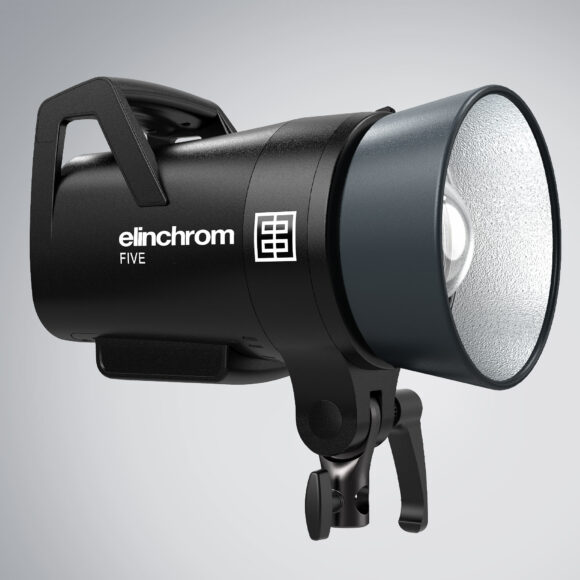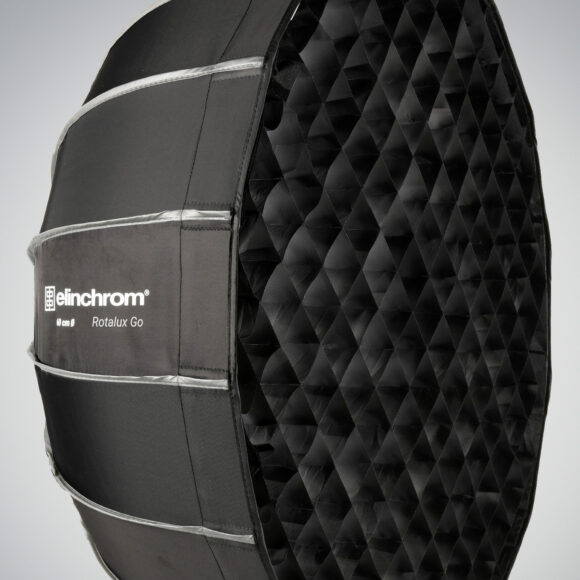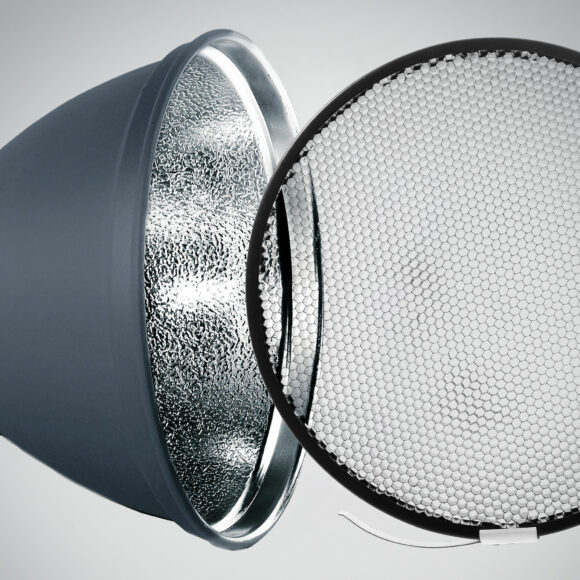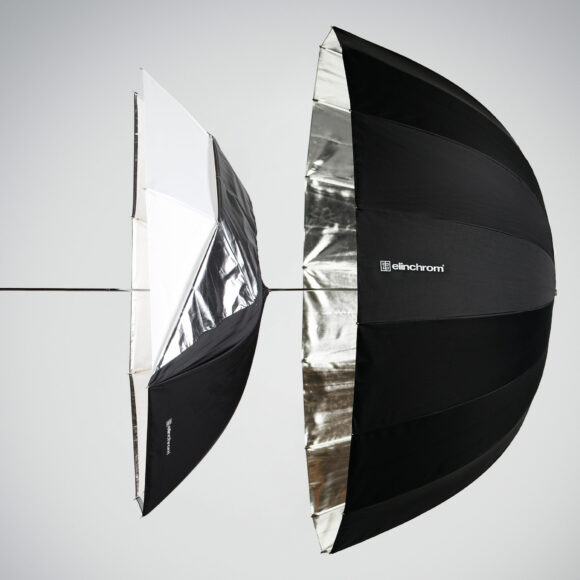5 photo shootings with the Elinchrom FIVE
With the Elinchrom ONE, you have a cable-free lighting experience. While the ONE’s 131Ws is great for many uses, sometimes you just need “more power.” The Elinchrom FIVE gives you exactly what you need — 500 battery-powered Ws.
Experiment the FIVE features in all condition
With the Elinchrom FIVE, you get more stamina with about 450 full-power charges and the ability to shoot and charge at the same time while being plugged into any USB-C power source. The Pro-Active optimized cooling also ensures flash power and color consistency during your shoot.
When testing my FIVEs, I decided to try out all of the features in all kinds of places. I started my adventure at dawn – standing knee-deep in water, and I finished floating over the waves as the day ended.
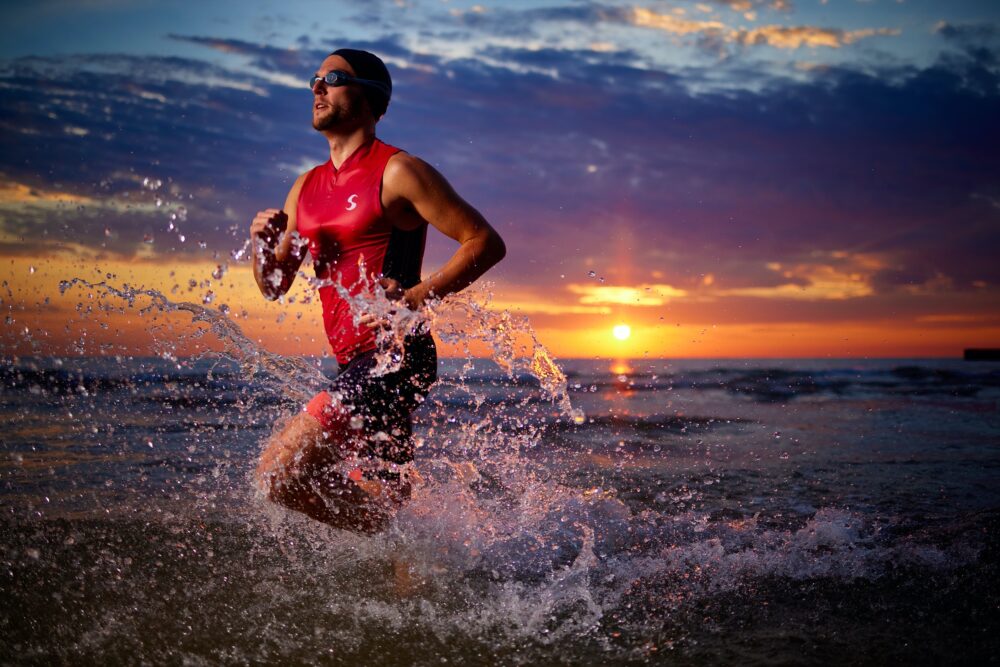
High Speed Sync to the test
I have always wanted to capture triathletes running out of the water with the sun rising behind them. So when I got my hands on a FIVE, I knew I would put its 500Ws and HSS to the test.
I thought I would use the Standard Reflector, but then I decided it looked a little too harsh, so I switched to the Rotalux Deep Octa Softbox 100cm / 39″. If I could own only one Softbox, this would be the one because it’s great for everything from headshots to full body.
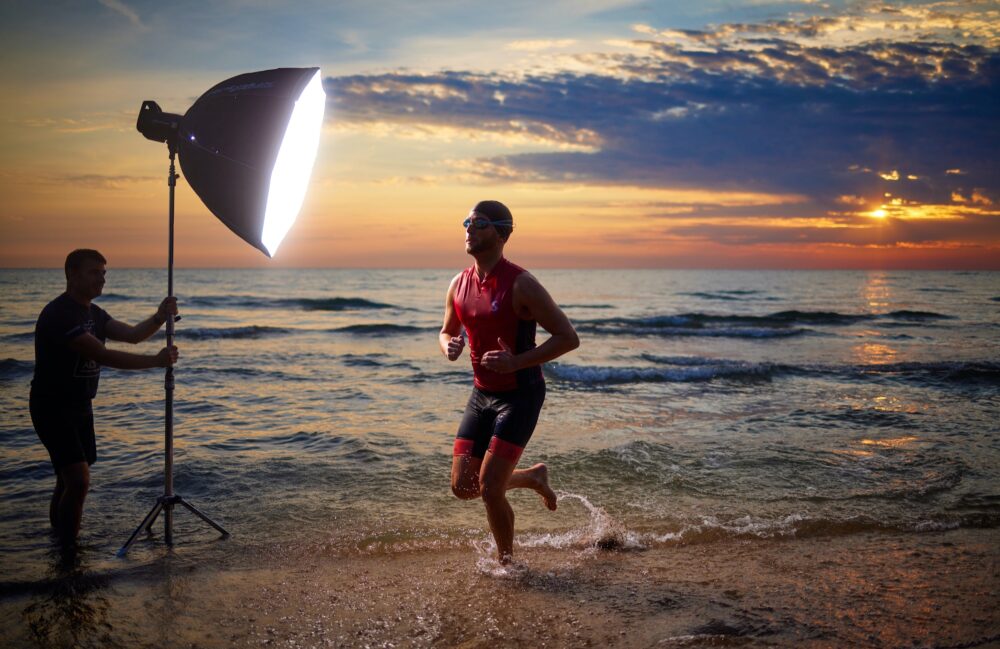
When using HSS, I will first pick my f-stop to achieve the depth of field I am looking for. Then I will choose the shutter speed I need to freeze the action and properly expose the sky at the lowest ISO possible. Then I will increase the power of my light until the subject is the right brightness.
I shot at 1/5000s to freeze the motion, and I increased my ISO to properly expose the sky at that f-stop and shutter combination. And finally, I turned up my FIVE until my subject was the proper brightness. In a situation like this, you can expect to be shooting at or near full power. By the end of the shoot, I was shooting up to 1/8000s because the ambient light was increasing. But 1/5000s is fast enough to freeze most athletes.
Freezing indoors with short flash duration.
For my second shoot, I decided to test out the flash-freezing power of the FIVE while shooting dancers leaping through the air.
While HSS is great for outdoors, you are usually better off using traditional flash and a shutter speed at or below your camera’s sync speed, which I like to refer to as traditional flash. When you do so, you will rely on flash duration to stop the motion.
When you use a shutter speed higher than your camera’s sync speed with a light capable of HSS, it takes to total possible single flash output of your flash. It divides it into a bunch of rapid pulses that match the movement of your camera’s shutter. Because the light is divided, the pulses aren’t as bright as a traditional flash. So most of the time, HSS isn’t a good choice if you want to use soft light and stop motion while also having a lot of depth of field. You can do all those things with HSS, but you’ll also need to use a high ISO, which will likely result in diminished image quality.
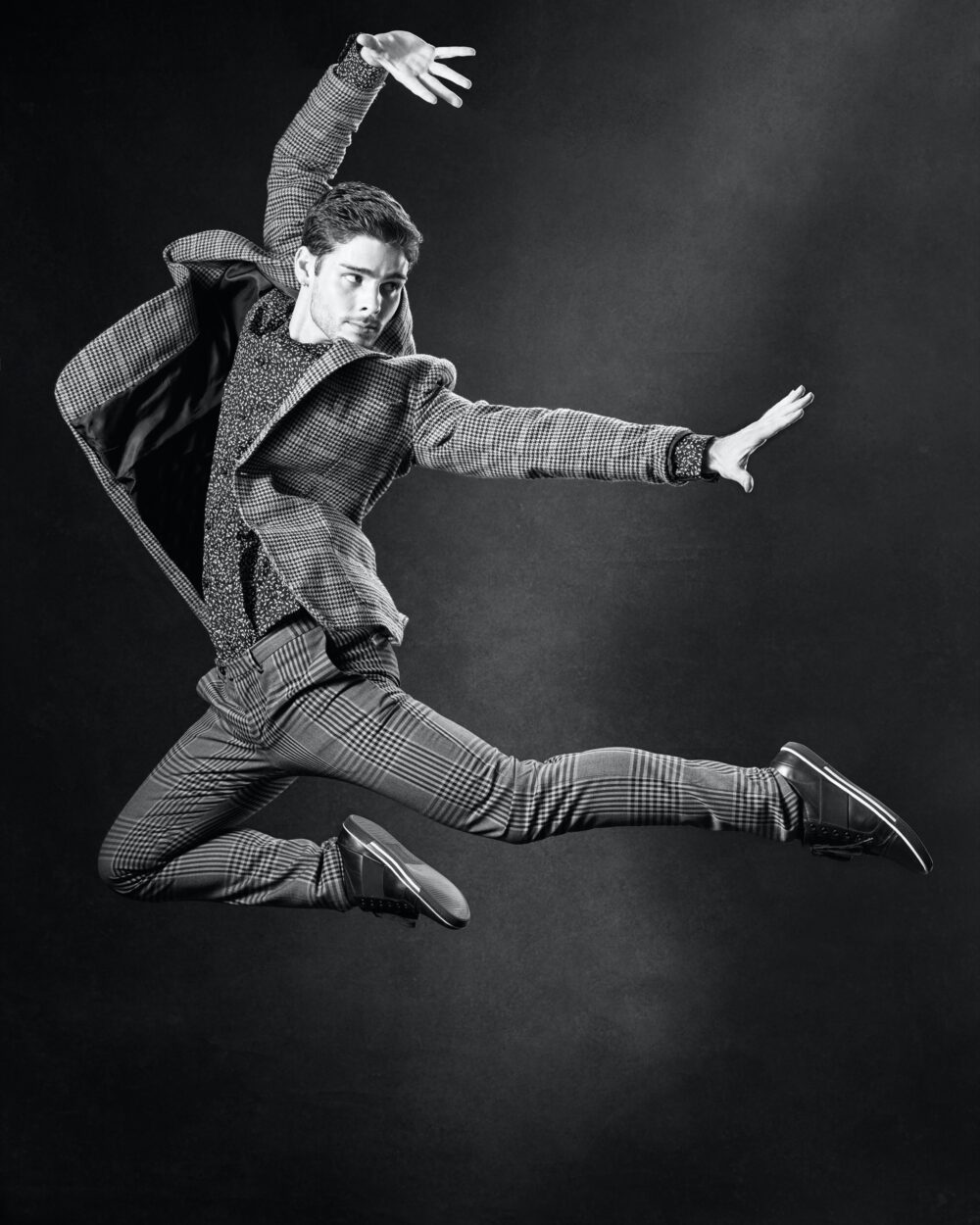
This is where flash duration comes in. So if you can imagine that you’re in a completely blacked-out studio, the only thing contributing to your exposure is going to be the pulse of your flash and in this situation, the flash duration, the length of time it takes that pulse to happen, becomes the shutter speed. If you have a long flash duration, it’s like having a slow shutter speed. If you have a very short flash duration, it’s like having a very fast shutter speed. Flash duration is often measured in t.1, which is the length of time it takes for 90% of the pulse to occur.
If you don’t have a blacked-out room, you just need to use an exposure combination that would greatly underexpose the ambient light — so much that if you took a photo without flash at the same settings, it would result in a practically blank frame.
I know from experience that if you have a flash duration shorter than t.1 1/3000 of a second and you overpower the light by three stops, then you can freeze a dancer flying through the air. Lucky for us the t.1 flash duration is shown on the back of the FIVE and other Elinchrom lights in real-time on the LCD. On the other hand, most other brands just publish their best-case flash duration at a particular power setting in their manual.
“The Elinchrom FIVE gives you exactly what you need — 500 battery-powered Ws.”
Living in colors
I saw a series recently where the photographer paired brightly colored clothing with a brightly colored backdrop. So I worked with my stylist friend Richard Paden to create a series of images in which the models’ clothing and my background choice resulted in split complementary, triadic, or tetradic color harmony.

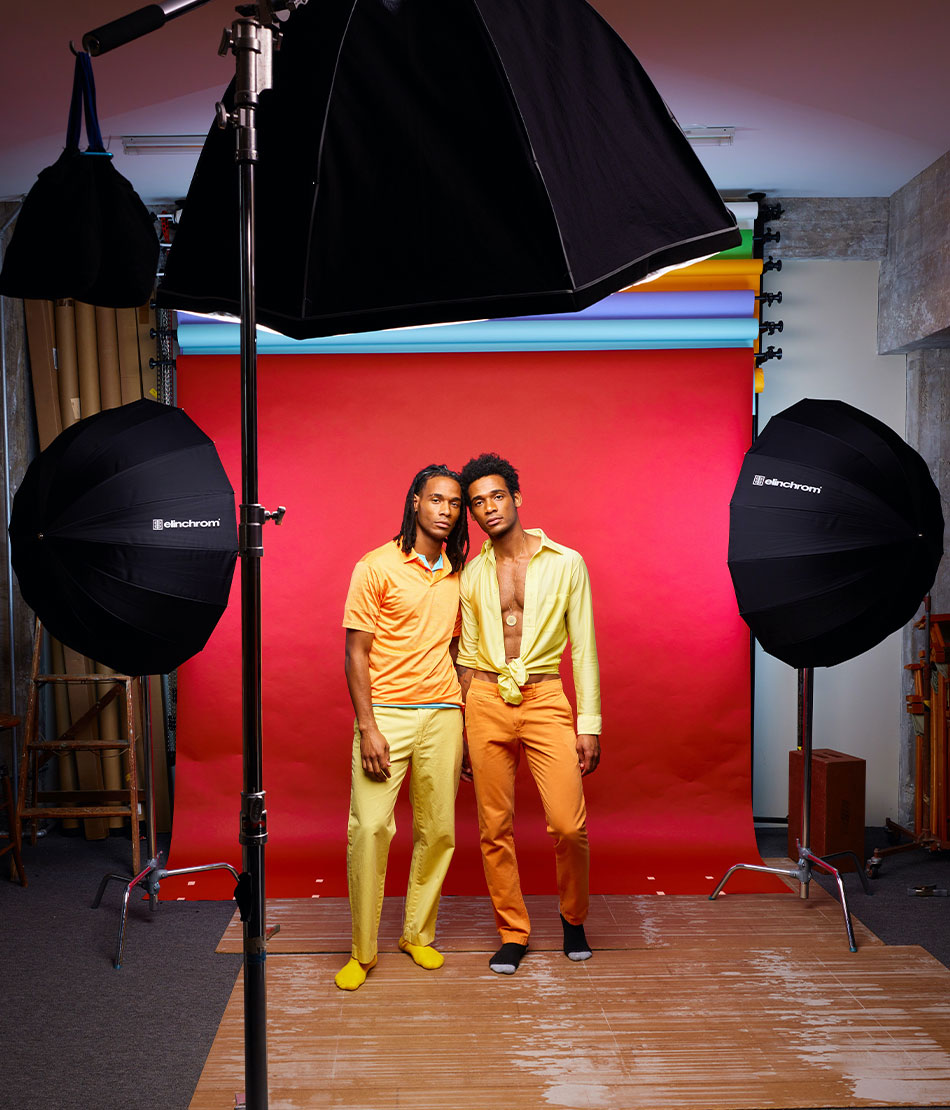
I lit the set with a Rotalux Deep Octa Softbox Indirect 150cm/59″ boomed over the front of the set. I added a Deep White Umbrella on each side behind the model. Then I rotated the umbrellas just right so that I either got colored light bouncing off the backdrop and onto the models, or I angled them so light from the umbrellas lit both the backdrop and also created an edge light on the subjects. — both of which separated them from the background.
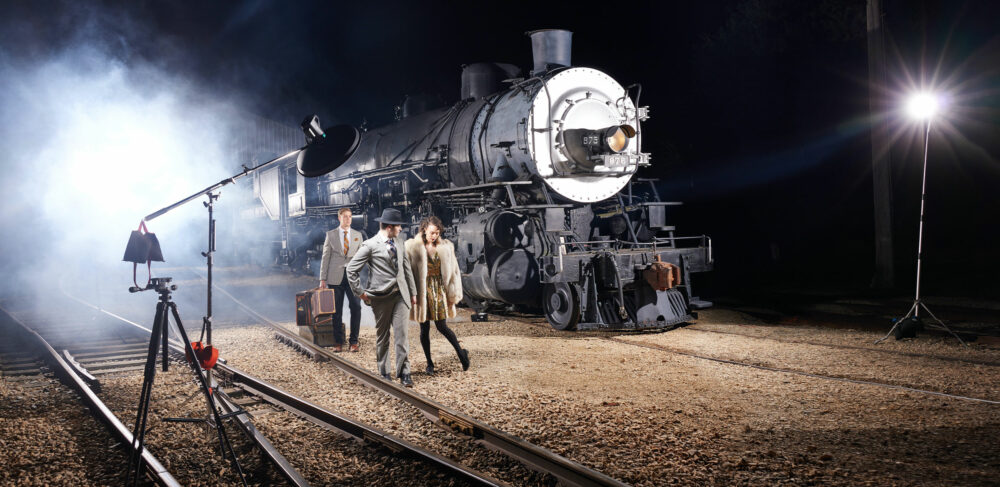
Now boarding on platform FIVE
For my next shoot with the FIVE, my lighting plan was inspired by my appreciation of railroad photographer O. Winston Link who captured steam locomotives at night using a large format camera and multiple flash tubes. Because all his photos used hard light, I also decided to use hard light.
For my main light, I boomed a Softlite White Beauty Dish 70cm/28” right above where the models were going to stand. Then I added a kicker behind the subjects and just out of the frame, on camera right and left. Both of these lights were paired with Standard Reflectors. Then I lit the locomotive and the coal car with Reflectors. All of which I fine-tuned using my light meter and the Elinchrom App.
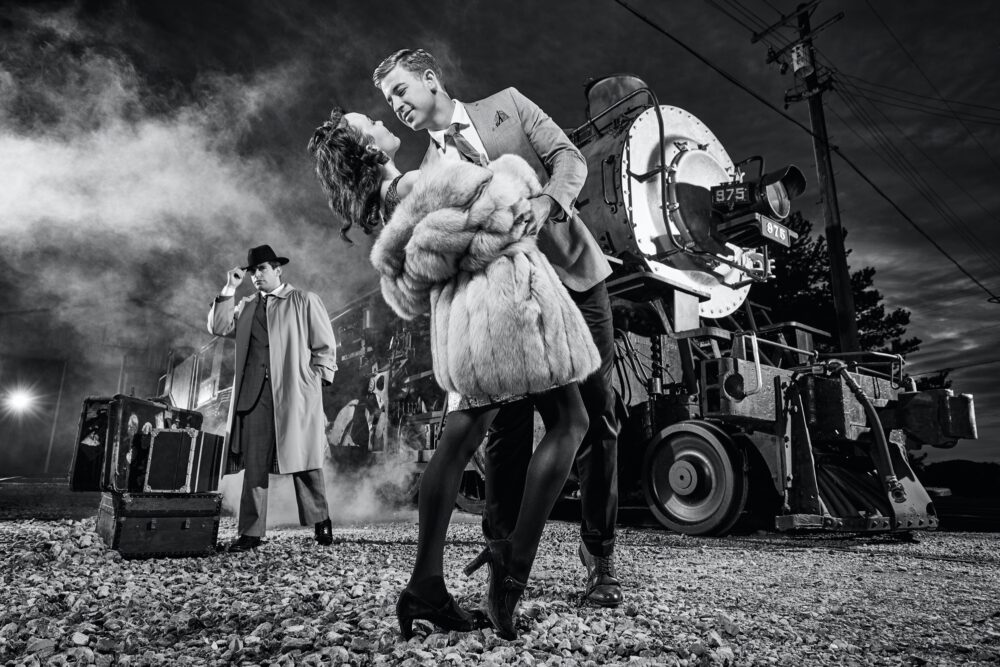
Standing on the dock by the bay
We boarded a sailboat with two FIVES and a Rotalux Go Octa Softbox to close the project. I planned to photograph our model with the Chicago skyline and the setting sun behind her. The water was rough, and the winds were cold and windy. During the shoot, the FIVE’s recycling kept up with every shot. As the sun dropped below the horizon and the skyline, my background got darker and darker, so I constantly changed my exposure and the power of the light to match the conditions.
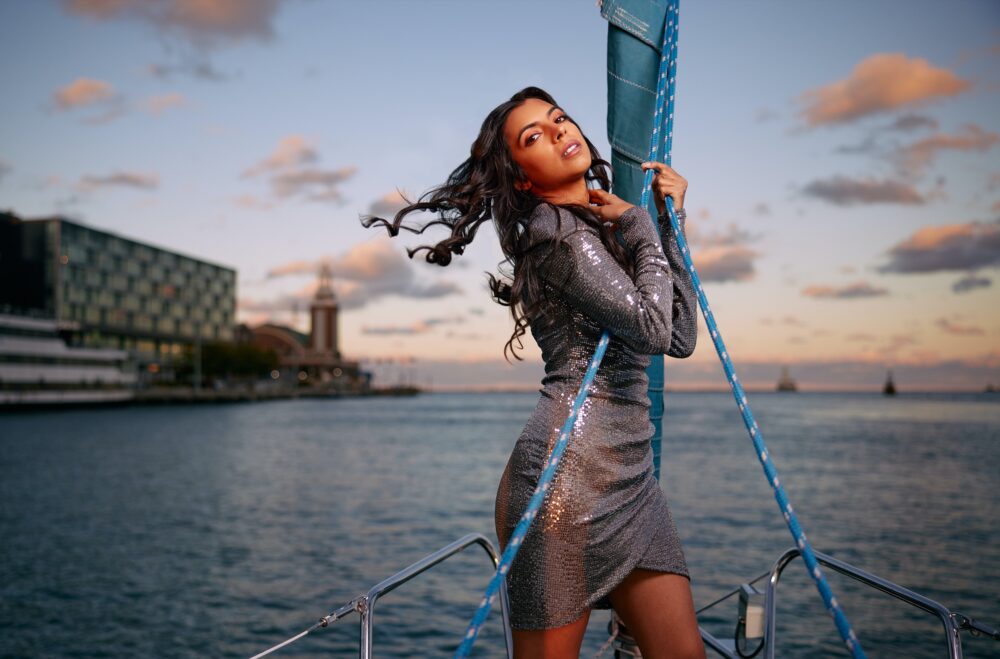
FIVEs plus ONEs equals 6
During these shoots, I took 1,540 photos, and I nearly did it on only five batteries, which says a lot about these lights. I used them in HSS, I often used some of them at full power, and I even used the battery power LED modeling lamps to light the locomotive scene for the behind-the-scenes video.
I love the fact that the flash tube in this light, and Elinchrom’s other lights, is more exposed than the offerings from other manufacturers. When the flash tube is inside the body of a monolight, the unit cannot fully fill a beauty dish or large soft boxes. Tests that I conducted showed me that the Elinchrom lights and modifiers produce very even light, and they have always been consistent flash to flash — in both color temperature and brightness. This type of reliability saves so many headaches and time wasted in post.
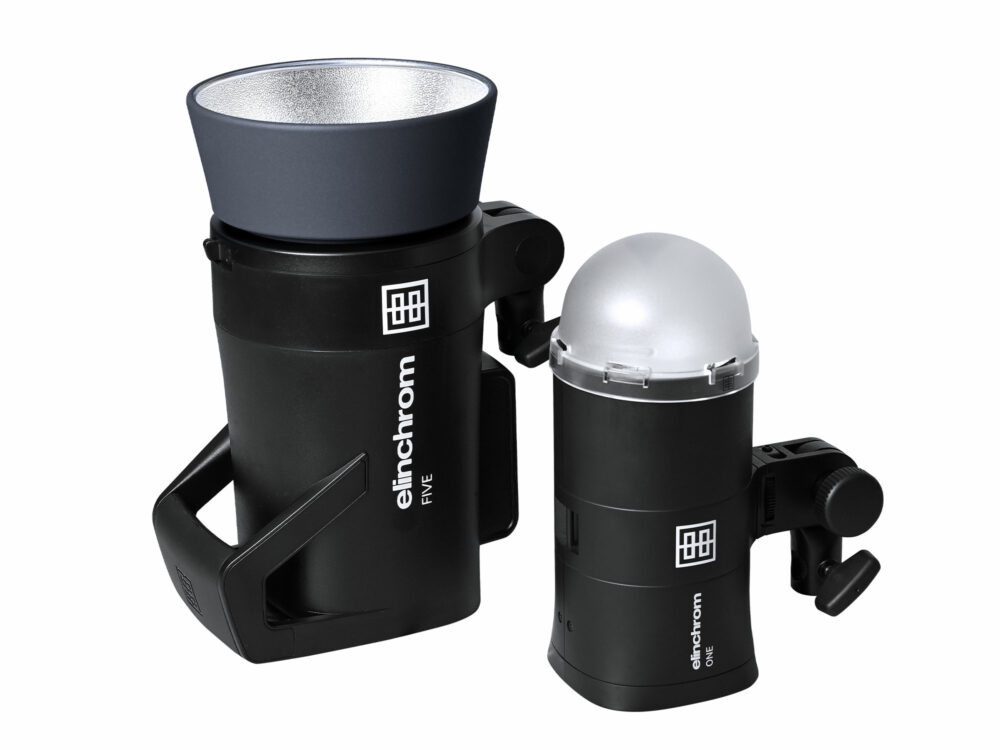
I was surprised how convenient it was to move the FIVEs around the studio. The first time I had to switch the light from one side of the set to the other, I loved that I didn’t have to unplug and then run power from the other side of the room.
In the future, I plan on filling my lighting kit with three FIVEs with three Elinchrom ONEs. I will use the 133Ws monos in small modifiers and for accent lights, and I will use the 500 Ws FIVE in large octas and when I need HSS.
My life will be easier now, and I will have one more excuse not to be lazy.

